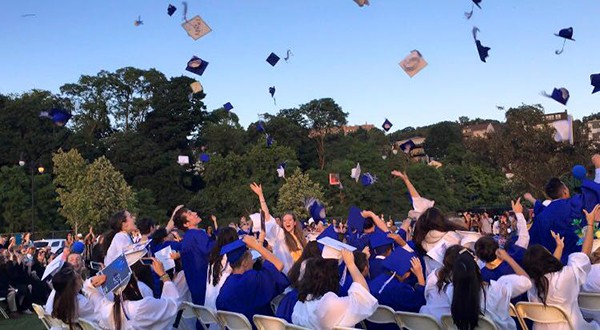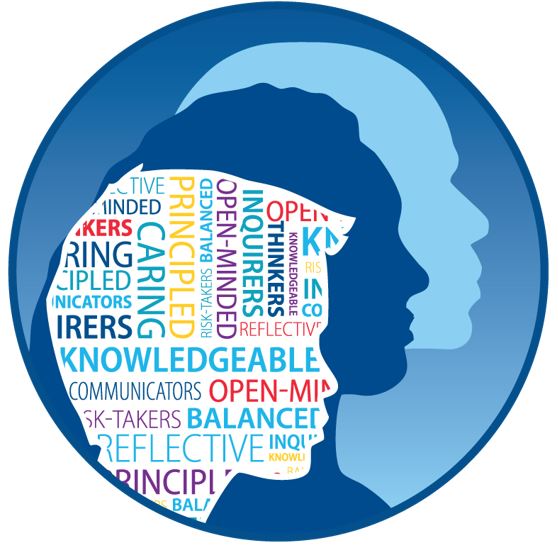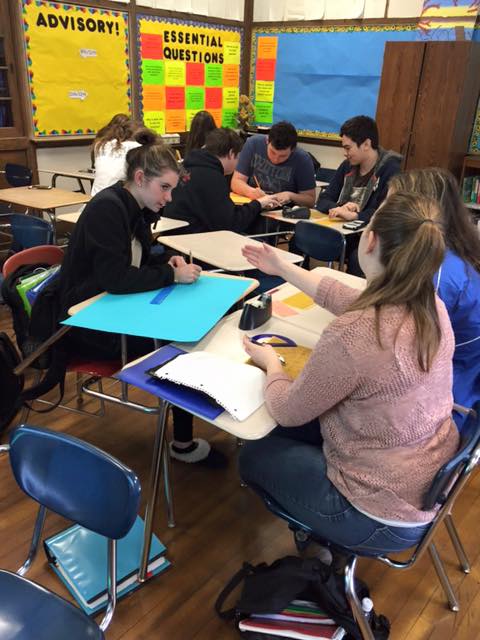By Marion Halberg
 Dobbs Ferry High School (DFHS) is a small public high school just north of New York City. The high school has approximately 440 students. Of these students, 13% receive special education services, over 3% are currently below English proficiency and receive ESOL services (English for speakers of other languages), a larger percentage are former English language learners and received ESOL in elementary and/or middle school, over 4% speak a language other than English at home (that’s an under-reported number due to recent changes in demographic data collection), and approximately 15% are eligible for free or reduced lunch (which is typically under-reported at the high school level).
Dobbs Ferry High School (DFHS) is a small public high school just north of New York City. The high school has approximately 440 students. Of these students, 13% receive special education services, over 3% are currently below English proficiency and receive ESOL services (English for speakers of other languages), a larger percentage are former English language learners and received ESOL in elementary and/or middle school, over 4% speak a language other than English at home (that’s an under-reported number due to recent changes in demographic data collection), and approximately 15% are eligible for free or reduced lunch (which is typically under-reported at the high school level).
When the school started the IB Diploma Programme (DP) in 1998, we offered it as a small, elite programme adopted to attract and enhance the high academic achievers in the district. It was very successful but really only engaged a small portion (approximately 10-15%) of the student body and didn’t address the needs of the school at large. Students, as well as teachers who were not involved with IB, didn’t relate to it and really didn’t understand why we had the DP. In truth, we weren’t an IB World School at that time; we were a school with a small IB Diploma Programme. This continued for many years, with push-back often coming from the community asking why we weren’t offering AP courses and why we invested so much in the DP. Today, every student in 11th and 12th grades takes DP English and DP mathematics because that’s all we offer. In addition, most students take at least one other IB course but usually more, and approximately 25% of the graduating students each year are full diploma candidates. In the May 2016 examination session, eight of our full diploma candidates don’t speak English at home, five were born outside the United States, two participated in our district’s ESOL program before high school, and three entered our district in middle or high school. Our salutatorian—the student ranking second highest in a graduating class who delivers the salutatory–who earned the diploma, took ESOL in our elementary school.
How did this happen? Looking back it is clear that when we truly began to understand and embrace the IB Learner Profile, we were able to change and expand the DP for all of our students. If you do that, everything else will follow. Here are some key steps we took on this journey.

IB Learner Profile: IB Learners are Inquirers, Knowledgeable, Thinkers, Communicators, Principled, Open-Minded, Caring, Risk-Takers, Balanced, Reflective
I confess: When I began working at DFHS the year after the school started the DP, I was one of the teachers who would turn and stop paying attention when the programme was discussed at faculty meetings. If we didn’t teach a course, we weren’t engaged at all with the programme. And we really didn’t understand it either.
Although many things evolved along the way, one big change happened when school leaders practiced open-mindedness and encouraged me to become the Diploma Coordinator. I am an ESOL teacher, and I also coordinate the district’s English Language Learning programme. I was a most unlikely choice to be involved with our Diploma Programme because I didn’t teach a DP course and most of the students with whom I worked did not access the programme at that time. With my appointment, colleagues began to see that someone who wasn’t even marginally involved with the programme could be very involved and interested in the IB. As I began to attend training and develop my own understanding of the DP, I realized how well the philosophy meshed with my own belief that all students deserve and should have equal access to what everyone else has. And that’s the belief of so many at DFHS. This open-mindedness really was the beginning of a complete expansion of IB at DFHS. That was about six years ago.
 Coinciding with this, our school leaders, with the benefit of a donation to fund it, began sending teachers who weren’t teaching IB courses to training. This was perhaps one of the most important ways to build not only the strength of the school’s IB identity but also the strength of the academic program. Teachers in ninth and tenth grades began to see what they were preparing their students for when they got to the Diploma Programme. They became knowledgeable, really for the first time, about what the DP really is. In faculty meetings, we began to use the language of inclusion. “We’re all IB teachers because every student we work with is going to be an IB student!” And we backed that up by sending just about all teachers in grades 9-12 for training. New teachers to our school are sent for training. So are administrators.
Coinciding with this, our school leaders, with the benefit of a donation to fund it, began sending teachers who weren’t teaching IB courses to training. This was perhaps one of the most important ways to build not only the strength of the school’s IB identity but also the strength of the academic program. Teachers in ninth and tenth grades began to see what they were preparing their students for when they got to the Diploma Programme. They became knowledgeable, really for the first time, about what the DP really is. In faculty meetings, we began to use the language of inclusion. “We’re all IB teachers because every student we work with is going to be an IB student!” And we backed that up by sending just about all teachers in grades 9-12 for training. New teachers to our school are sent for training. So are administrators.
Counselors are the gatekeepers of the programme, and when they attend training, they really learn about university recognition and how the DP is good for all students. Counselors are the ones on the ground helping students and parents understand the courses and diploma offerings. They are key to helping students practice balance and recognize whether going for the full diploma or taking several courses will be a better match for the student. Dobbs Ferry sent our first counselor for training in 2011. We had already had the program for 13 years! Now, all of our high school counselors are IB-trained. And they are completely behind the DP for our students. DFHS has been, for a long time, a model for a full-inclusion district. Throughout the K-12 program, there are classes and courses taught by co-teachers who work and collaborate for all the students with whom they work. Another decisive move was to send our special educators and content teachers together for DP subject training. In addition, some special educators have participated in the continuum three workshops on special needs.
This universal training of our educators allows us to support students with Individualized Educational Plans (IEPs) and 504 plans and gives them access to the Diploma Programme. In addition to a full-inclusion model (which means that DP English and DP mathematics courses have sections with co-teachers), we have taken advantage of the IB’s own evolution in terms of granting accommodations to those with special needs. We file for those accommodations and have worked with the IB on several cases recently that were more complicated, but we wanted to give students the ability to access the programme through taking the courses and completing the May exam papers. And that’s important: Accessing the programme doesn’t necessarily mean being a full diploma candidate (although it might). Access means being able to take courses and explore interests through the taking of DP courses. Being balanced and caring and principled applies to all of us in the school community.
Watch out for Part II of our school’s story, coming soon on the IB blog.
Meanwhile, here’s a link to our story: https://www.youtube.com/watch?v=SV9Nkkj3KrY. And here’s a link to our Head of School’s Blog: “On Principal with John Falino” https://johnfalino.com/
Marion Halberg is the Diploma Programme Coordinator and K-12 English Language Learning Coordinator at Dobbs Ferry Union Free School District, New York, USA.
